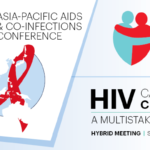Editor’s Note: In recent years, with the effectiveness of antiretroviral therapy (ART) in suppressing HIV replication, the life expectancy of HIV-infected individuals has significantly increased. At the same time, the trend of aging among HIV/AIDS patients has gradually become a research hotspot in the field. From June 8th to 10th, 2023, the Asia Pacific AIDS and Co-infections Conference (APACC 2023) was held in Singapore. In this issue, we are honored to have Dr. Hongzhou Lu from Shenzhen Third People’s Hospital share with us the latest research on the aging of HIV/AIDS patients.
In recent years, China has witnessed a changing trend in newly reported HIV infections. Between 2010 and 2018, the number of HIV-infected individuals aged 60 and above reported annually in China increased nearly fivefold. With the increasing prevalence of ART, the survival rate of HIV-infected individuals continues to rise. This has also led to a growing proportion of elderly patients among existing HIV-infected individuals. However, as they age, HIV-infected individuals face unique challenges and needs.
At this year’s APACC conference, a study conducted by Hisham S from the University of Malaysia (Abstract #15) introduced the first application of the World Health Organization’s (WHO) Intrinsic Capacity Assessment to the HIV population. This assessment aims to comprehensively evaluate the physical, mental, and social functioning of HIV-infected individuals, providing them with more comprehensive care and support.
The results of this study indicate that HIV-infected individuals exhibit higher rates of intrinsic capacity deficits. These deficits manifest in various areas, including cognition, hearing, vision, mobility, emotions, and vitality. Compared to the control group, more HIV-infected individuals reported deficits in two or more domains. This finding reminds us that HIV-infected individuals require comprehensive care and support to address the challenges they may face in multiple aspects of life.
The research also found a close association between intrinsic capacity assessment and several key indicators. Firstly, higher intrinsic capacity scores were positively correlated with increased disability, decreased quality of life, increased loneliness, and increased social isolation. These results suggest that intrinsic capacity assessment can help identify the challenges and needs that HIV-infected individuals may encounter in their lives, enabling appropriate interventions. Secondly, higher intrinsic capacity scores were positively correlated with poor self-rated health, depression, chronic comorbidities, and polypharmacy. This indicates that intrinsic capacity assessment also plays a crucial role in assessing the health status and disease management of HIV-infected individuals.
For the practicality of HIV epidemiology in China, this study holds significant importance. With the increasing number of elderly HIV-infected individuals in China, it becomes increasingly urgent to focus on and study their needs. Intrinsic capacity assessment, as a comprehensive assessment tool, contributes to a comprehensive understanding of the physical, mental, and social functioning of HIV-infected individuals, allowing for personalized care and support. This not only enhances the quality of life for HIV-infected individuals but also improves the management of their health status and the prevention of complications. We look forward to Chinese scholars conducting research and practice to verify the effectiveness and feasibility of intrinsic capacity assessment among HIV-infected individuals in China.
Original Article Link: Hisham S, et al. Measuring Intrinsic Capacity: A Screening Tool for Integrated Care in Aging People Living with HIV. APACC 2023 Abstract #15

